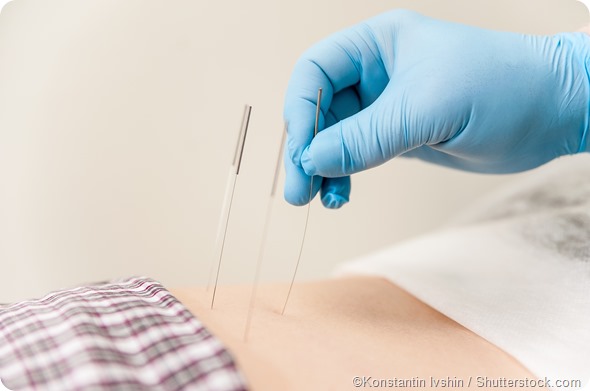The management of lower back pain typically depends on the nature and cause of the pain. In most cases, management involves a combination of physical therapy and drug treatments. Surgical procedures are reserved for refractory cases, or when there is significant and worsening nerve damage.
Physical therapy
Hot or cold packs are often recommended for the relief of pain and to reduce inflammation, particularly for individuals who have suffered an injury to the lower back. There is currently no research-backed evidence to prove that this is effective. However, many individuals find it helpful, and it does not appear to have adverse effects.
Ice vs. Heat | Back Pain Relief
People with lower back pain should be encouraged to continue with their normal daily activities, as long as it is not heavy manual labor, and resist the urge to stay in bed for more than the acute phase. Inactivity can worsen the pain and increase the risk of depression and blood clots.
Instead, physical therapy with light stretching exercises can help to enable the area to heal more efficiently. Strengthening exercises are also recommended for people with chronic (but not acute) low back pain, and is particularly important for pain caused by irregularities of the spine.
Medications
There are many different medications that may be used in the management and relief of lower back pain. These include:
- Simple analgesics: acetaminophen and aspirin
- Opioids: codeine, oxycodone, hydrocodone, morphine
- Non-steroidal anti-inflammatory drugs (NSAIDS): ibuprofen, ketoprofen, naproxen
- Anticonvulsants
- Tricyclic antidepressants: amitriptyline
- Selective serotonin-receptor inhibitors (SSRIs) or serotonin–norepinephrine reuptake inhibitors (SNRIs)
Each of these medications has its own specific risks and benefits, and the best treatment will depend on the individual factors of the patient. Points to consider may include:
- The cause of pain
- Duration of treatment
- Safety in pregnancy
- Side effects
- Availability
- Cost
Other non-pharmacological treatments
There are also various other non-pharmacological treatments that may be used in the management of lower back pain. These include:
- Spinal manipulation or mobilization: Chiropractors are practitioners who practice spinal mobilization, adjustment, massage, or stimulation, to improve the alignment and strength of the spine and connective tissues in the lower back.
- Traction: Weights or pulleys are used to gradually reposition the spine and improve alignment so as to relieve pressure on the spinal cord and nerves.
- Acupuncture: This technique involves the insertion of needles into so-called pressure points of the body. It is not known precisely how this works but it appears to be effective in some patients at least. Acupuncturists explain the effect as being linked to clearing blockages in Qi or stimulating neurotransmitters.

- Biofeedback: This involves the attachment of electrodes to the skin and the use of electromyography to increase awareness of breathing, heart rate, temperature and muscle tension.
- Nerve block therapies: This treatment involves the inhibition of nerve conduction in specific areas with the use of local anesthetics, botulinum toxin or steroid injections.
- Transcutaneous electrical nerve stimulation (TENS): Placement of an electrode on the skin of the affected area to create electrical impulses and block pain signals from nerves.
Surgery
Surgical techniques are usually reserved as a last-line option when other techniques have failed to provide adequate relief of lower back pain. This is because it is associated with a risk of nerve compression and worsening pain.
Surgery is most often needed in cases with musculoskeletal injuries or compression of the nerves that causes neuropathic pain. Procedures that may be used include:
- Vertebroplasty
- Kyphoplasty
- Spinal laminectomy
- Discectomy
- Microdiscectomy
- Foraminotomy
- Intradiscal electrothermal therapy (IDET)
- Nucleoplasty (plasma disc decompression, PDD)
- Radiofrequency denervation
- Spinal fusion
- Artificial disc replacement
The treatment decision about whether to use surgery for low back pain, and, if so, which procedure to use, will vary from case to case of lower back pain. Each procedure has unique risks and benefits that promote its use over others in certain situations.
References
- http://www.ninds.nih.gov/disorders/backpain/detail_backpain.htm#3102_3
- http://patient.info/health/nonspecific-lower-back-pain-in-adults
- http://emedicine.medscape.com/article/310353-treatment#showall
- http://orthoinfo.aaos.org/topic.cfm?topic=a00311
Further Reading